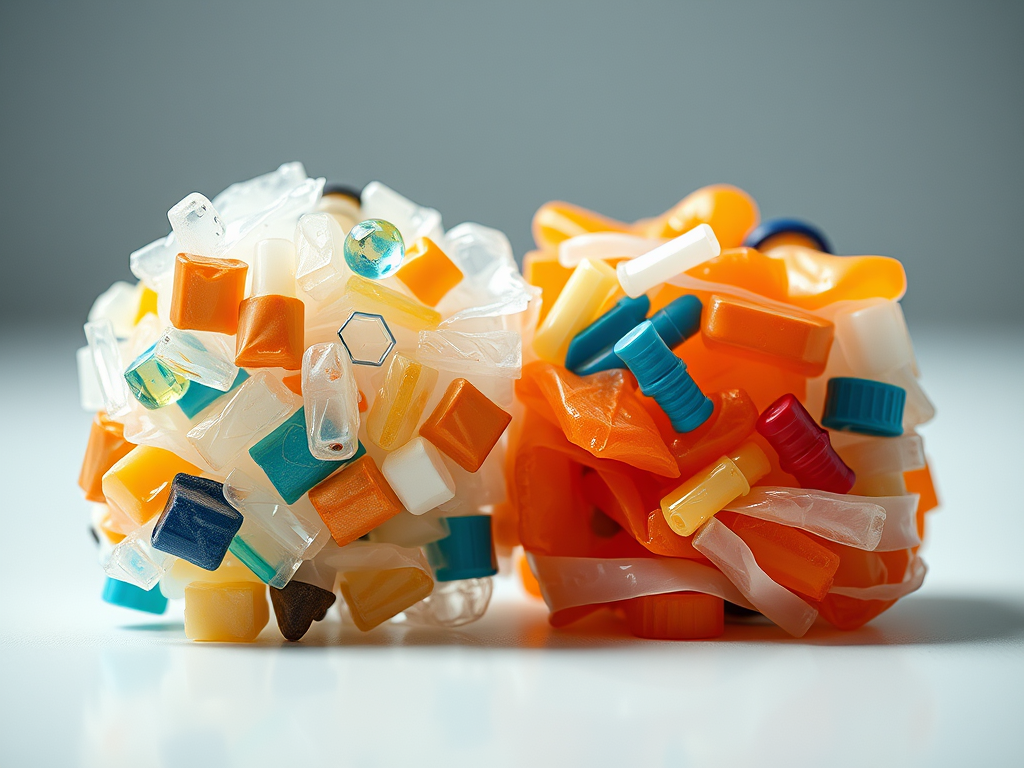The differences between Chemically Recycled (CR) vs. Mechanically Recycled (MR) PCR plastic resins: Which is better for your brand?
The magic that emerges from effective collaboration is undeniable. When diverse minds converge with a shared purpose, the results can be transformative.
Sustainability has never been more important in the beauty and personal care industry, and one of the key areas of focus is the type of recycled plastic resins used in packaging. When it comes to Post-Consumer Recycled (PCR) plastic, there are two primary methods: chemically recycled and mechanically recycled. While both help reduce reliance on virgin plastic, they have unique benefits and limitations. Here’s what you need to know:
Mechanically Recycled PCR Plastic Resin
How It Works:
In mechanical recycling, post-consumer plastic waste (like used bottles) is collected, cleaned, shredded, and melted down. The melted plastic is then reformed into new products, like packaging containers. Mechanical recycling is less complex and typically more cost-effective than chemical recycling.
Pros of Mechanically Recycled PCR:
Lower Cost: Since it’s a simpler process, mechanically recycled PCR is usually less expensive to produce.
Lower Energy Demand: Mechanical recycling uses less energy than chemical recycling, which can mean a smaller carbon footprint.
Readily Available: There’s more supply of mechanically recycled PCR, so it’s more commonly used for packaging.
Cons of Mechanically Recycled PCR:
Reduced Purity and Strength: Every time plastic is mechanically recycled, it degrades slightly, so the quality can be lower than virgin plastic. This may limit its applications.
Color and Odor Impurities: Mechanically recycled plastic may retain slight color tints or odors from its previous life, which can affect its appearance and performance in premium products.
Not Suitable for All Types of Plastics: Some plastics (like multi-layer or heavily colored plastics) are harder to recycle mechanically.
Chemically Recycled PCR Plastic Resin
How It Works:
In chemical recycling, plastic waste is broken down at the molecular level into its original building blocks, which can then be reformed into high-quality, like-new plastic. Unlike mechanical recycling, which only processes certain plastics, chemical recycling can handle more complex materials.
Pros of Chemically Recycled PCR:
High Purity, Like Virgin Quality: Chemically recycled plastic has a purity level close to new plastic, making it suitable for more applications, including high-end and sensitive uses.
Versatile for Different Types of Plastics: Chemical recycling can process hard-to-recycle plastics, like mixed or multi-layered materials, expanding the potential for what types of plastics can be reused.
More Circular Economy-Friendly: By turning plastic waste back into its original molecules, chemical recycling supports a closed-loop system, where materials are recycled indefinitely without quality loss.
Cons of Chemically Recycled PCR:
Higher Cost: Chemical recycling is a more complex process, often making it more expensive than mechanical recycling.
Higher Energy Use and Emissions: The chemical process usually requires more energy, which can increase the overall carbon footprint unless renewables are used.
Still Limited Availability: As a newer technology, chemically recycled PCR is less available than mechanically recycled PCR, though this is expected to improve with time.
Which Should You Choose?
Both chemically and mechanically recycled PCR offer great options for reducing your environmental footprint, and the right choice depends on your brand’s values, budget, and the type of product you’re creating.
For everyday, cost-effective packaging: Mechanically recycled PCR can be a great choice.
For high-quality, premium, or sensitive products: Chemically recycled PCR offers the advantage of like-new plastic, ideal for brands prioritizing top-quality packaging and recyclability.
No matter which option you choose, opting for recycled plastic helps reduce reliance on new plastic, decrease landfill waste, and support a more sustainable future. Let’s keep innovating to make beauty truly sustainable, one package at a time! 🌱



